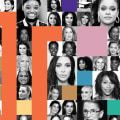Popular culture is the set of practices, beliefs and objects that embody the most widely shared meanings of a social system. It includes multimedia objects, entertainment and leisure, fashion and trends, and language conventions, among other things. From pop and folk music, everything changed to a wide range of music that was more in the rock 'n' roll genre. Progressive rock became popular and saw different bands and solo artists create chaos through this genre.
Some of the best movies released in the '70s include “A Clockwork Orange”, “The Godfather” and “Rocky”, to name a few. For example, studies on Shakespeare place much of the vitality characteristic of his drama in its participation in popular Renaissance culture. The meaning of popular culture then began to merge with that of mass culture, consumer culture, image culture, media culture and culture created by manufacturers for mass consumption. You know it when you access the Internet, listen to music, watch television, read comics, play with apps or go to the movies, to a concert or to a show, or even buy some popular enamel pins.
Pop culture is like a unifying bridge over time, bringing together generations from diverse backgrounds. Popular culture (or pop culture) generally refers to the traditions and material culture of a particular society. This would include an extremely wide range of music, from vaudeville and minstrel shows to heavy metal. The most influential criticisms of popular culture came from Marxist theorists at the Frankfurt School during the 20th century.
Pop is specific to something that contains qualities of mass appeal, while popular refers to what has gained popularity, regardless of its style. Pop culture, although large, fickle and elusive to define, is actually a general term that encompasses anything that is currently in fashion, whose ingredients or most of them are familiar to the general public. Some of the popular books published in the 1950s include “The Catcher in the Rye “, Invisible Man and “The Fellowship of the Ring”, to name a few. In his successful textbook Cultural Theory and Popular Culture (now in its eighth edition), British media specialist John Storey offers six different definitions of popular culture.
The presence of social networks means that consumers can speak directly to producers and are themselves producers, which changes the concept of pop culture. The term popular culture was coined in the middle of the 19th century and referred to the cultural traditions of the people, in contrast to the official culture of the state or of the ruling classes.


